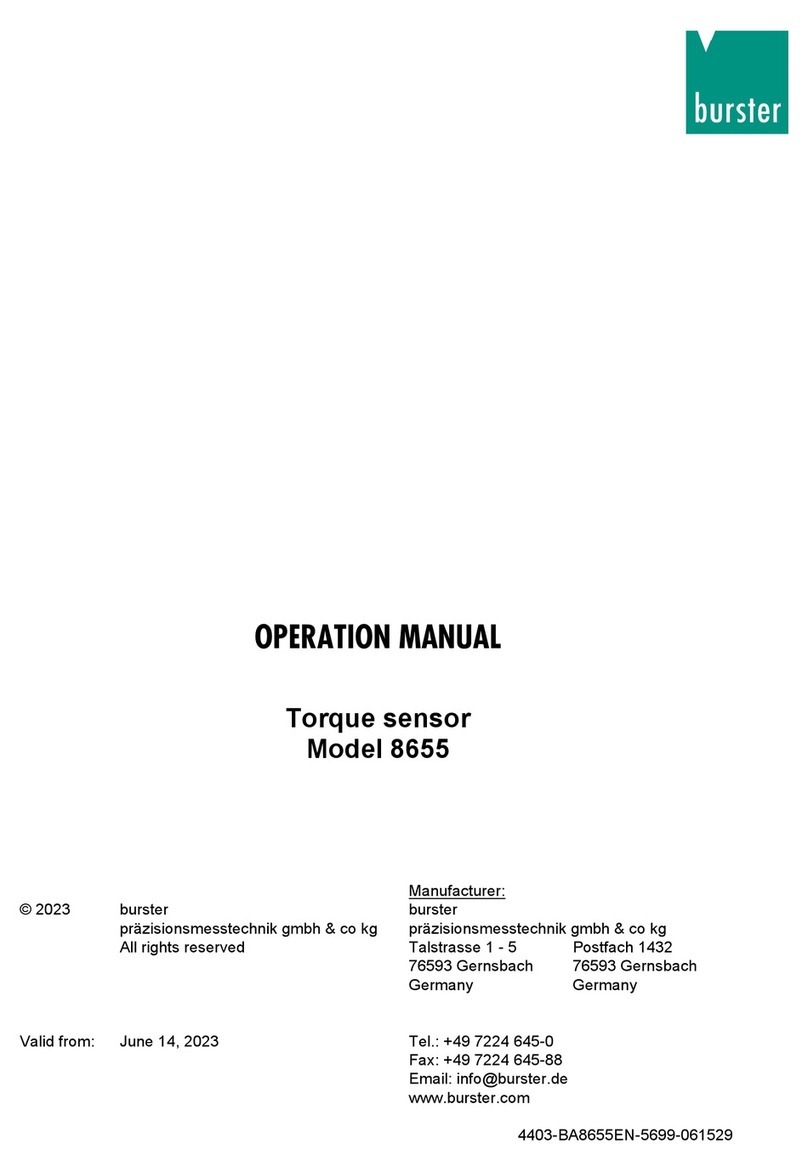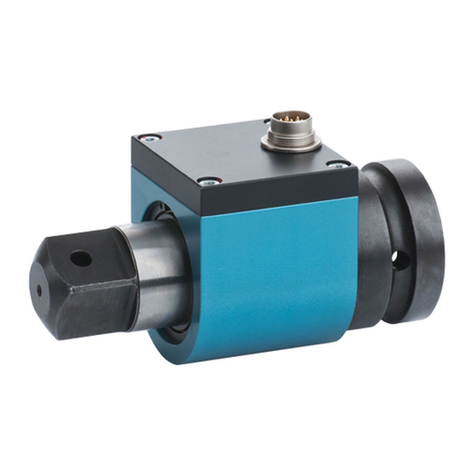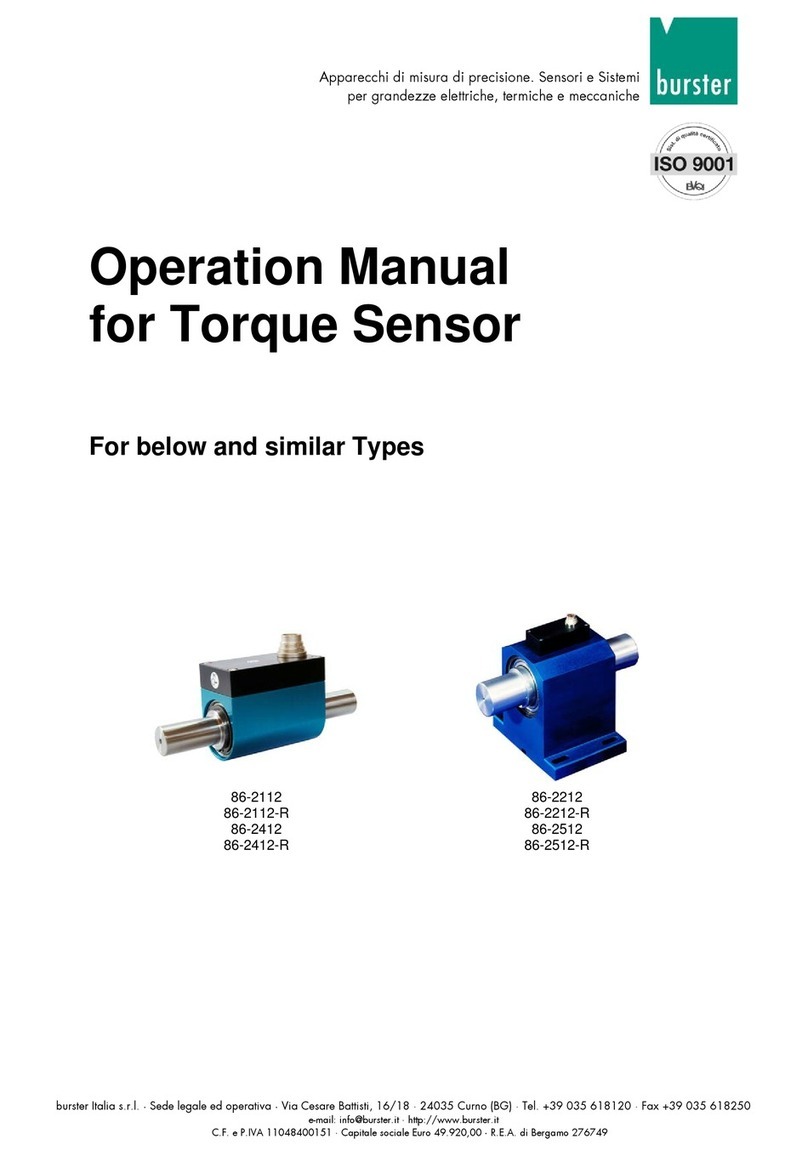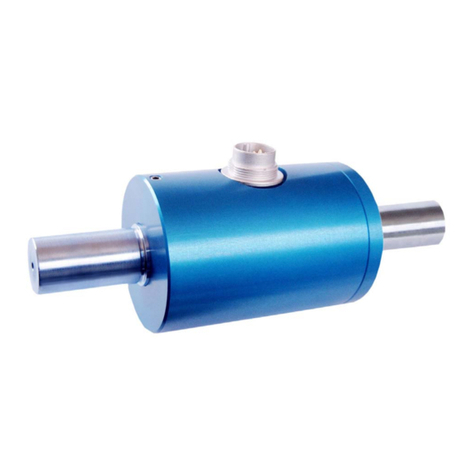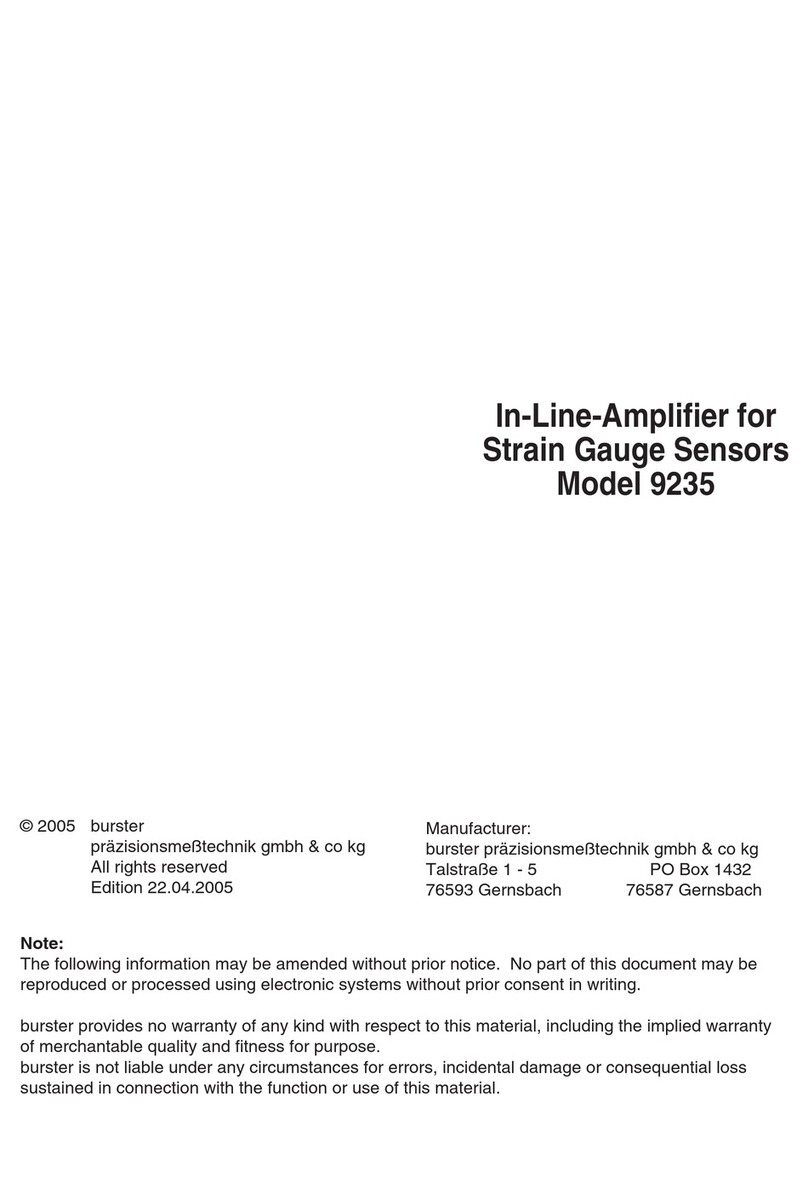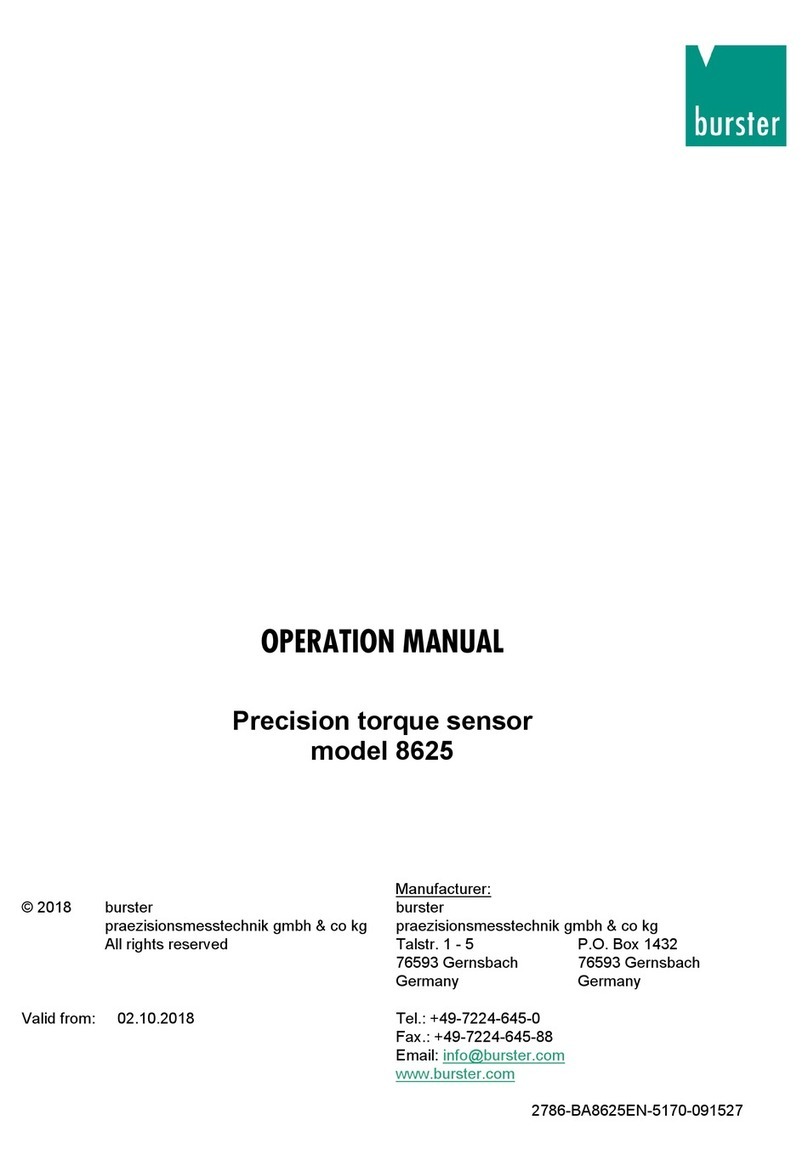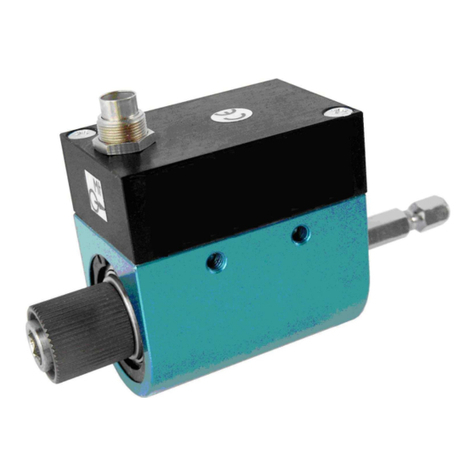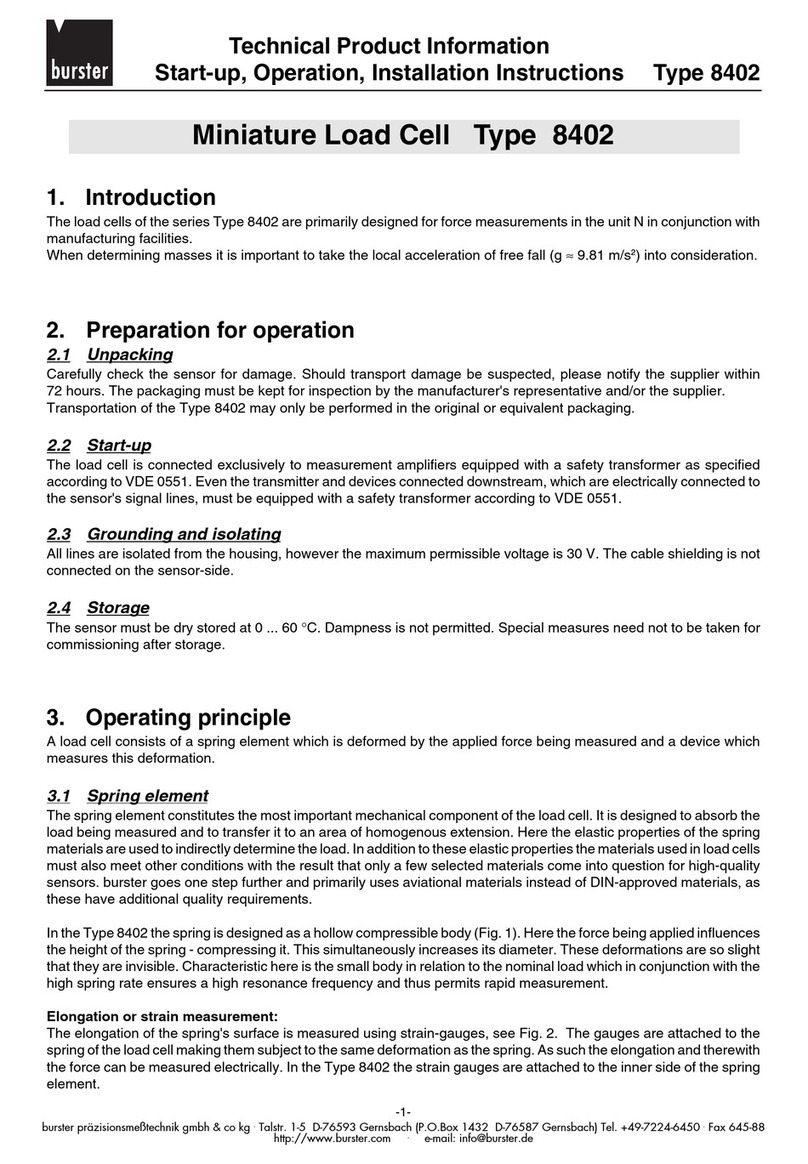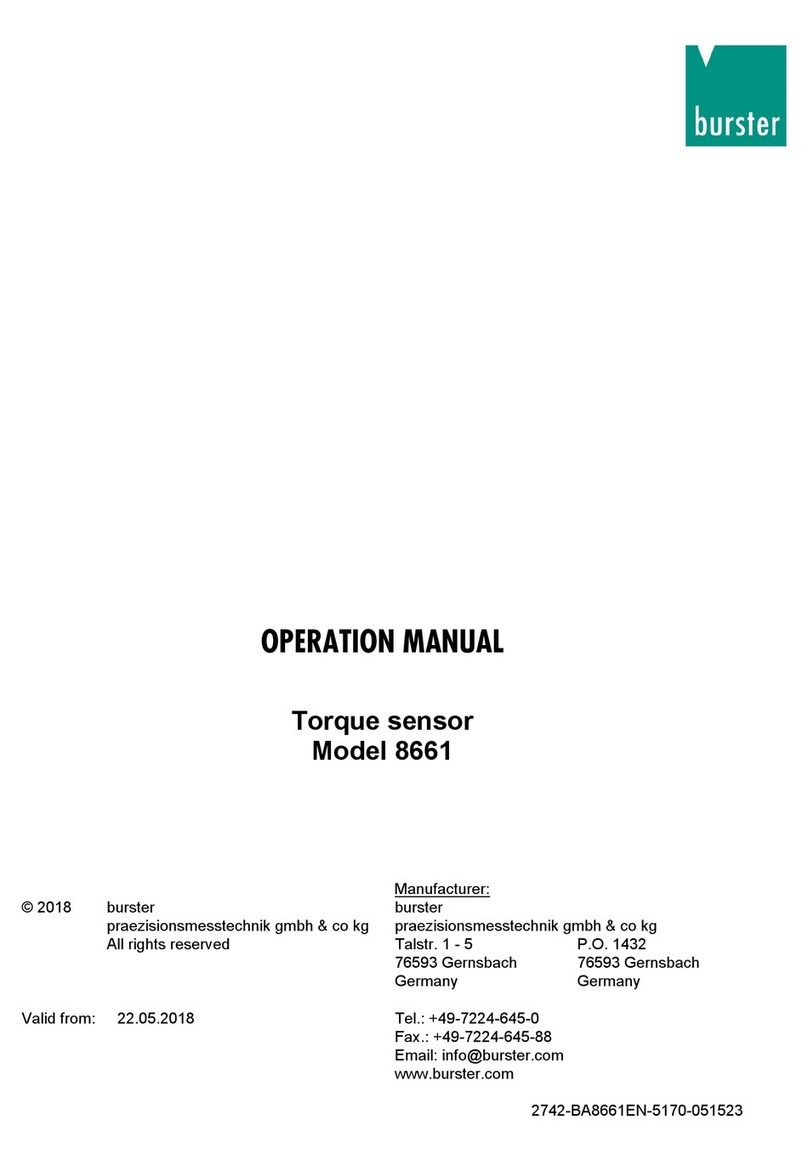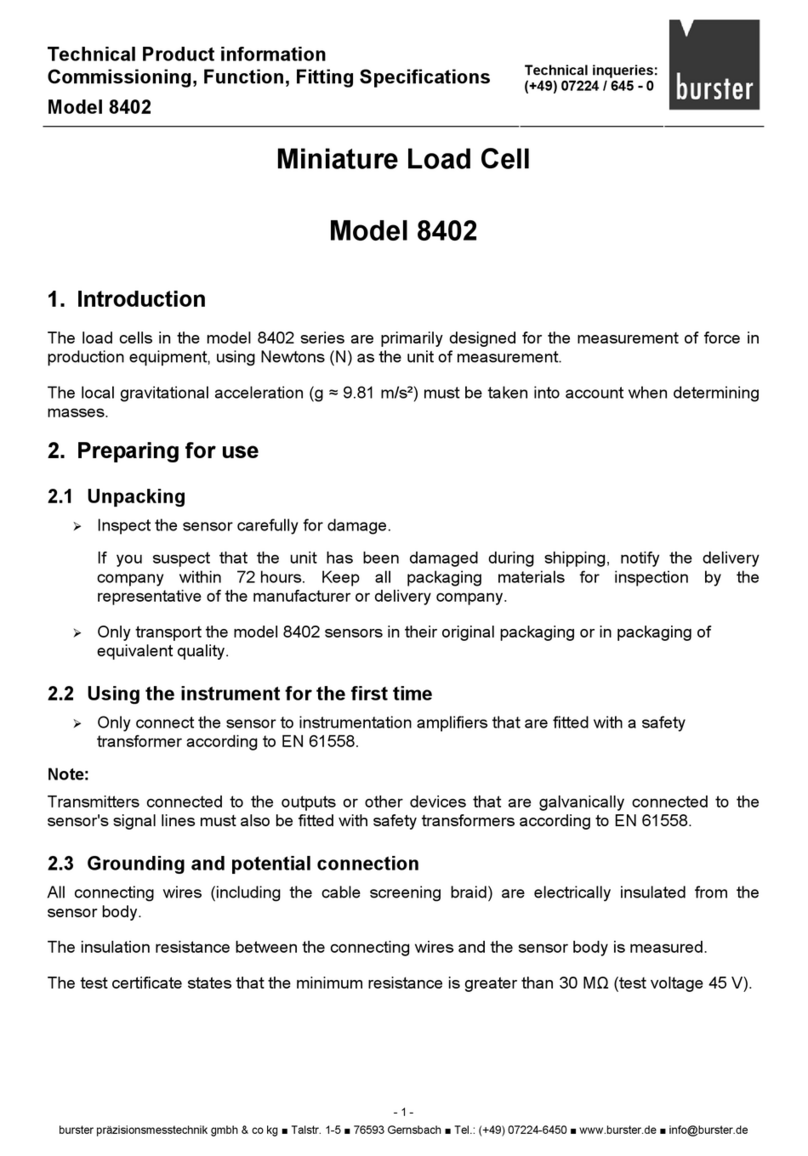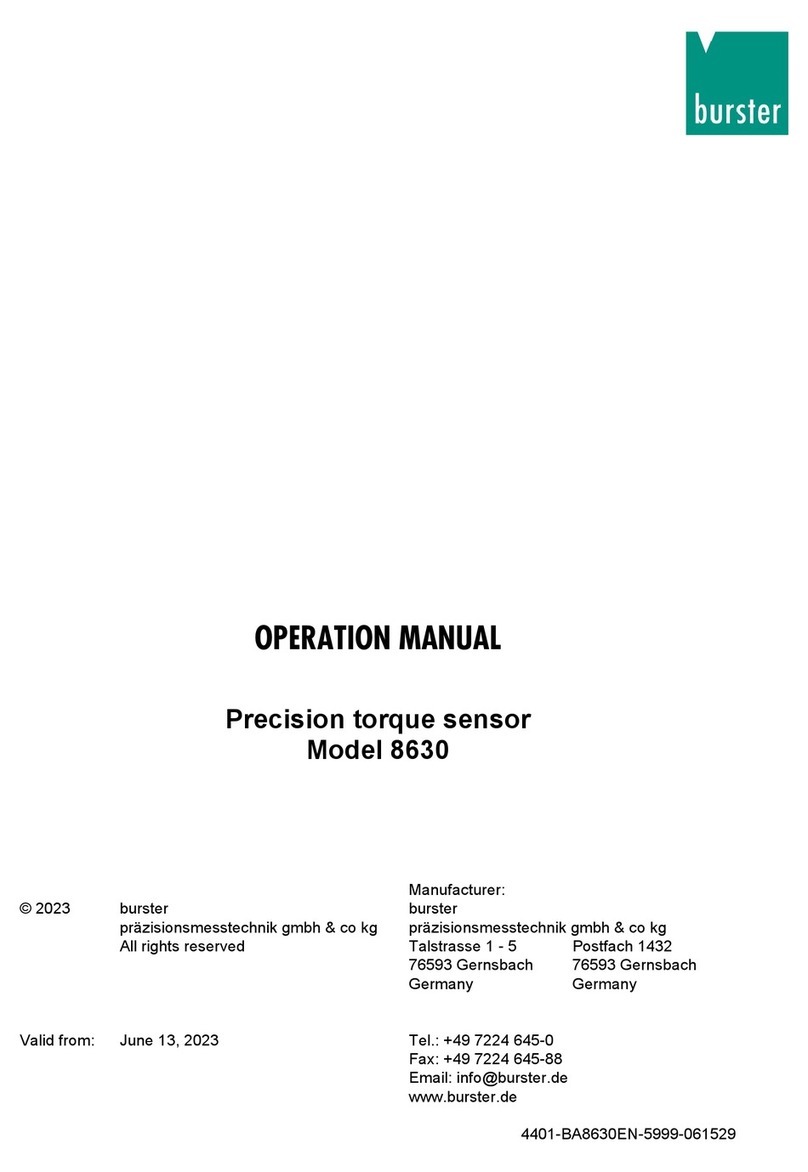
burster Italia s.r.l. · Sede legale ed operativa · Via Cesare Battisti, 16/18 · 24035 Curno (BG) · Tel. +39 035 618120 · Fax +39 035 618250
e-mail: info@burster.it · http://www.burster.it
C.F. e P.IVA 11048400151 · Capitale sociale Euro 49.920,00 ·R.E.A. di Bergamo 276749
Apparecchi di misura di precisione. Sensori e Sistemi
per grandezze elettriche, termiche e meccaniche
Contents
1Read First......................................................................................................................................................5
1.1 Safety and Caution Symbols..................................................................................................................5
1.2 Intended Use..........................................................................................................................................5
1.3 Dangers..................................................................................................................................................5
1.3.1 Neglecting of Safety Notes.............................................................................................................5
1.3.2 Remaining Dangers........................................................................................................................5
1.4 Reconstructions and Modifications ........................................................................................................5
1.5 Personnel...............................................................................................................................................5
1.6 Warning Notes .......................................................................................................................................5
2Term Definitions.............................................................................................................................................6
2.1 Terms.....................................................................................................................................................6
2.2 Definition of the Pictograms on the Torque Sensor ...............................................................................6
3Product Description .......................................................................................................................................6
3.1 Mechanical Setup..................................................................................................................................6
3.2 Electrical Setup ......................................................................................................................................7
3.2.1 Sensors with Analog Output...........................................................................................................7
3.2.2 Sensors with Interface RS485........................................................................................................7
3.2.3 The Serial Communication .............................................................................................................7
4Mechanical Assembly....................................................................................................................................8
4.1 Couplings ...............................................................................................................................................8
4.1.1 Examples for Single-Jointed Couplings........................................................................................8
4.1.2 Misalignment Possibilities of Single-Jointed Couplings..................................................................8
4.1.3 Alignment of the Measurement Arrangement.................................................................................9
4.2 Assembly Possibility Stator....................................................................................................................9
4.3 Fixing Half Shells ...................................................................................................................................9
4.3.1 Nominal torque up to 10 N·m..........................................................................................................9
4.3.2 Nominal Torque 20 N·m up to 150 N·m........................................................................................10
4.4 Basic Assembly....................................................................................................................................10
4.5 Installation Instruction ..........................................................................................................................10
4.5.1 Installation Steps ..........................................................................................................................11
5Electrical Connection...................................................................................................................................13
5.1 Pin Connection.....................................................................................................................................13
5.2 Cable....................................................................................................................................................14
5.3 Shielding Connection ...........................................................................................................................14
5.4 Running of Measuring Cables..............................................................................................................14
5.5 Electrical Calibration ............................................................................................................................14
5.5.1 Switch-On of Calibration Control at Analog Output ......................................................................14
5.5.2 Calibration Control at RS485........................................................................................................14
5.6 Speed Sensor (Option) ........................................................................................................................14
6Measuring....................................................................................................................................................15
6.1 Engaging..............................................................................................................................................15
6.2 Direction of Torque...............................................................................................................................15
6.3 Static / Quasi-Static Torques ...............................................................................................................15
6.4 Dynamic Torques.................................................................................................................................15
6.4.1 General.........................................................................................................................................15
6.4.2 Natural Resonances.....................................................................................................................15
6.5 Speed Limits ........................................................................................................................................15
6.6 Disturbance Variables..........................................................................................................................15
7Maintenance................................................................................................................................................16
7.1 Maintenance Schedule.........................................................................................................................16
7.2 Trouble Shooting..................................................................................................................................16
8Decommission .............................................................................................................................................17
9Transportation and Storage.........................................................................................................................17
9.1 Transportation......................................................................................................................................17
9.2 Storage.................................................................................................................................................17
10 Disposal ...................................................................................................................................................17
11 Calibration................................................................................................................................................17
